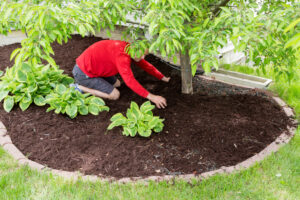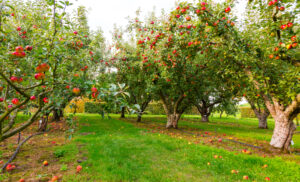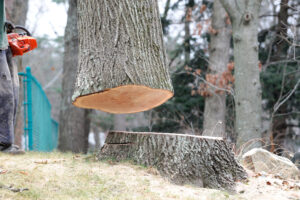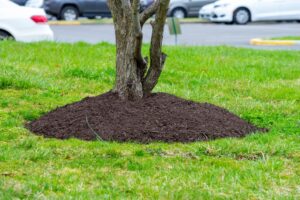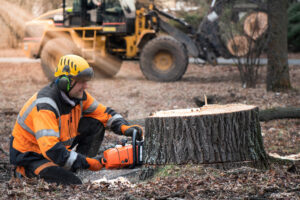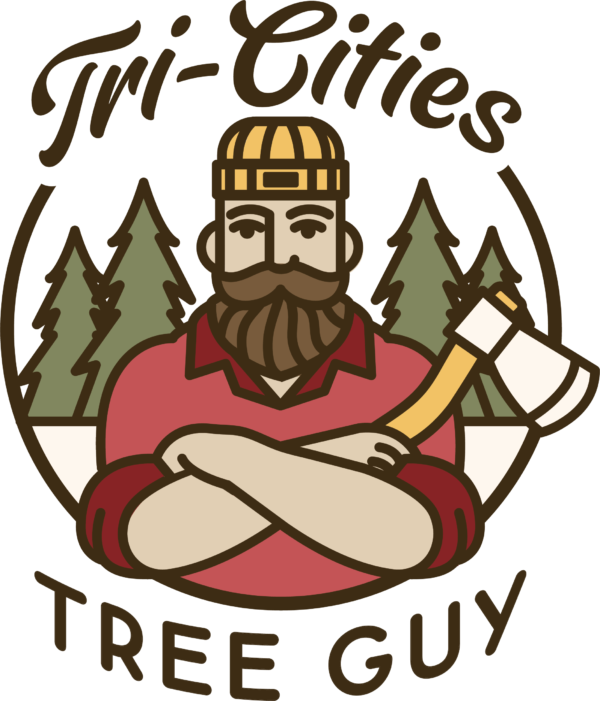After removing a tree, you’re often left with a tree stump, a remnant of the tree trunk that can be an eyesore and a potential safety hazard. There are several methods for dealing with tree stumps, including stump removal and stump grinding. In this article, we’ll explore the reasons to remove tree stumps, discuss the different stump removal methods available, and provide guidance on hiring professional tree services.
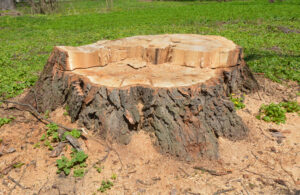
Why Remove Tree Stumps?
Aesthetics
Tree stumps can be unsightly and detract from the overall appearance of your landscape. Removing them can improve your home’s curb appeal and make your yard look more polished and well-maintained. It’s an important consideration for many homeowners who want to feel confident about the look of their yard.
Safety
Stumps can be a tripping hazard, especially for children and the elderly. Removing stumps can make your yard safer and reduce the risk of injury. For safety reasons, it’s a critical step in eliminating safety hazards from your property.
Pest Control
Tree stumps can attract pests like termites, ants, and beetles, which can then spread to other trees and parts of your property. Removing stumps can help prevent pest infestations. It’s a proactive step in maintaining the health of your yard and other trees.
Tree Growth
Stumps can encourage the growth of new shoots and suckers, which can be difficult to manage and may compete with other plants for resources. Removing the stump can prevent unwanted tree regrowth. It’s a key part of ensuring the energy reserves of your yard are not depleted by unwanted plant life.
What is Stump Grinding?
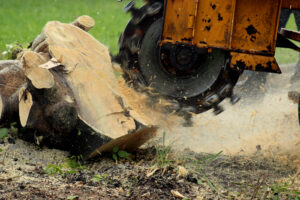
Stump grinding is a process that involves using a specialized machine, known as a stump grinder, to shred the stump into small wood chips. This method is quick and efficient, and it leaves the ground level and ready for other uses. The wood chips produced can be used as mulch in your garden or disposed of as you see fit.
Stump Size
The size of the stump can significantly impact the stump removal process. Larger stumps may require more powerful stump grinders or more time to remove. It’s important to measure the diameter and height of the stump before starting the removal process to ensure you have the right tools and enough time to complete the job.
Stump Removal Methods
There are several methods for removing stumps, each with its own pros and cons. The main factors to consider when choosing a method are the size and number of stumps, the proximity of the stumps to other structures, and your budget.
Chemical Stump Removal
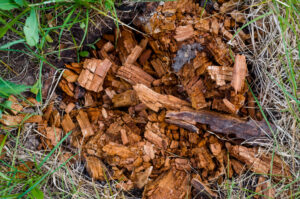
Chemical stump removal involves using a product that accelerates the decomposition of the stump. These chemicals often contain potassium nitrate, which breaks down the wood fibers, making it easier to remove the stump. This method can take several weeks to months, depending on the size of the stump. It’s a good option if you’re not in a hurry and want to save money on manual labor.
Manual Stump Removal
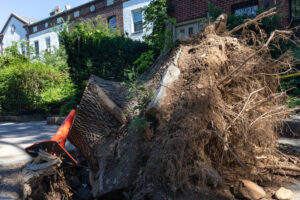
Manual removal involves digging around the stump to expose the roots, cutting the roots, and then using a winch, truck, or other heavy equipment to pull the stump out of the ground. This method can be labor-intensive and may not be suitable for large or deeply rooted stumps. However, it’s a good option if you want to completely remove the stump and don’t mind the physical effort.
Stump Grinding
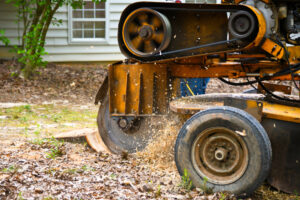
Stump grinding involves using a specialized stump grinder to grind the stump down to ground level or a few inches below. This method is quick and effective, leaving behind wood chips that can be used as mulch or compost. Grinding is less invasive than stump removal and does not leave a large hole in the ground. It’s a good option if you want a quick solution and plan to plant new trees in the same area.
Stump Grinding vs. Removal: Pros and Cons
Stump Grinding
Pros:
-
Quick and efficient
-
Less invasive
-
Creates usable wood chips
Cons:
-
The remaining stump is below ground
-
Potential for new growth
Stump Removal
Pros:
-
Completely removes the entire stump
-
No chance of regrowth
Cons:
-
Labor-intensive
-
Leaves a large hole in the ground
How to Hire a Professional Stump Removal Service
When it comes to stump removal or grinding, it’s often best to hire a professional tree service. Here are some tips on how to choose the right service for your needs.
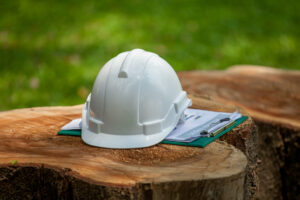
Credentials and Insurance
Choose a service with proper credentials, such as licensing and certification. Ensure they carry liability insurance to protect you from potential accidental damage.
Experience and Reputation
Look for a company with experience in stump removal or grinding and a solid reputation. Read reviews and ask for references from previous clients. It’s important to feel confident in the company’s ability to safely handle heavy machinery and equipment.
Cost and Timeline
Get multiple quotes to compare costs and choose a service that fits your budget. Inquire about the estimated timeline for the project to ensure it aligns with your schedule. Remember, the cost can vary depending on the diameter inch of the stump and the number of stumps to be removed.
DIY = DON’T INJURE YOURSELF
While it might be tempting to try and remove a stump yourself to save money, it’s important to remember that stump removal can be a dangerous task if not done correctly. Heavy machinery like stump grinders can cause serious injuries if not used properly. Additionally, underground utilities might be located near the stump, posing a risk of damage or injury. For these reasons, it’s often best to leave stump removal to the professionals.
Post-Tree Removal Considerations and Processes
Protecting Surrounding Trees
When removing a stump, it’s important to protect the surrounding trees and plant life. The process of stump grinding or removal can potentially damage nearby trees or plants if not done carefully. The process can disturb the soil and damage the roots of the nearby trees. If the stump is from a large tree, removing it could change the amount of sunlight nearby trees receive. It’s important to consider these factors and take steps to minimize the impact on nearby trees when removing a stump.
Fill with Soil
After the stump has been ground or removed, you’ll be left with a hole in the ground. This hole should be filled with soil to level the ground and prevent any tripping hazards. You can then plant grass seeds or new trees in the area if desired.
Tree Transplanting
If you’re removing a tree but want to keep it alive, tree transplanting is an option. This involves carefully digging up the tree, including its root system, and replanting it in a new location. This process can be complex and requires careful planning to ensure the tree’s survival.
Preventing Growth of New Tree Sprouts
After a tree is cut down, the remaining stump can sometimes sprout new growth. To prevent this, you can apply a tree-killing chemical or remove the stump entirely.
Tree Stump Removal: DIY vs. Hiring a Professional
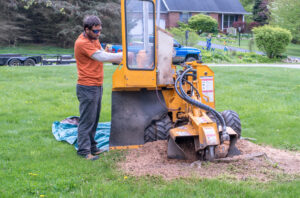
While it’s possible to remove a stump yourself, it’s a labor-intensive process that requires the right tools andknowledge. You’ll need a chainsaw to cut the stump down to ground level and a stump grinder to grind the stump into wood chips. Stump grinders can be rented from a local hardware store, but they’re heavy equipment that can be dangerous if not used correctly. Always wear the appropriate safety gear, including gloves, safety glasses, and sturdy footwear.
If you’re removing the stump manually, you’ll need to dig around the stump to expose the roots, then cut the roots and pull the stump out of the ground. This method requires a lot of physical effort and may not be suitable for large stumps or stumps from trees with extensive root systems.
While removing a stump yourself is possible, it can be a difficult and potentially dangerous task. Hiring a professional is often safer and more efficient. They have the necessary equipment and expertise to remove the stump safely and quickly.
Stump Grinding Cost
The cost of stump grinding can vary depending on several factors, including the size and number of stumps, the type of tree, and the stump’s location. On average, homeowners can expect to pay between $100 and $200 per stump. However, many tree services offer discounts for grinding multiple stumps in one visit, which can help you save money. Getting quotes from several companies is always a good idea to ensure you’re getting the best price.
Stump Removal Process
The stump removal process begins with assessing the stump and the surrounding area. This includes checking for any nearby trees, underground utilities, and other structures that could be affected by the removal process. Once the area is deemed safe, the work begins.
The stump is first cut down to ground level using a chainsaw. Then, a stump grinder grinds the stump into wood chips. The grinder is a heavy piece of machinery requiring safety gear, including gloves, safety glasses, and sturdy footwear. The grinding process continues until the stump is ground a few inches below the ground level.
After the stump is ground, the remaining wood chips can be used as mulch for your garden or disposed of as you see fit. The hole left by the stump is then filled with soil and lightly raked to level the ground. If desired, grass seeds can be planted in the area to restore the look of your lawn.
Stump Removal vs. Stump Grinding
While both methods effectively remove stumps, they each have their pros and cons. Stump removal involves removing the entire stump and root system, which can be a labor-intensive process. It leaves a large hole in the ground, but there’s no chance of the tree regrowing from the stump.
On the other hand, stump grinding is less labor-intensive and doesn’t leave a large hole in the ground. However, there’s a small chance that the tree could regrow from the remaining stump if it’s not ground deep enough.
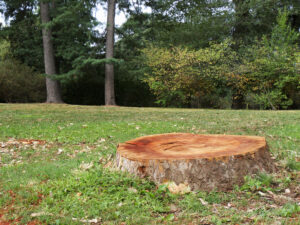
Stump Area Preparation
Before the stump removal or grinding process begins, it’s important to prepare the stump area. This includes removing any rocks or debris from around the stump, marking any underground utilities, and setting up safety barriers if necessary. If there are large trees or other plants nearby, they may need to be protected to prevent accidental damage during the removal process.
Stump Removal Safety
Safety is a crucial consideration when removing a stump. The process involves the use of heavy machinery and tools, which can be dangerous if not used correctly. It’s important to wear the appropriate safety gear, including gloves, safety glasses, and sturdy footwear. Additionally, the area around the stump should be clear of people and pets during the removal process to prevent injuries.
Stump Removal for Large Trees
Removing stumps from large trees can be a more complex process due to the size of the stump and the extensive root system. In these cases, it’s often best to hire a professional tree service. They have the necessary equipment and expertise to safely and effectively remove large stumps.
Stump Grinding for Multiple Stumps
If you have multiple stumps to remove, stump grinding can be a cost-effective and efficient option. Many tree services offer discounts for grinding multiple stumps in one visit. Plus, the wood chips produced from the grinding process can be used as mulch for your garden, providing an added benefit.
Stump Removal and Tree Services
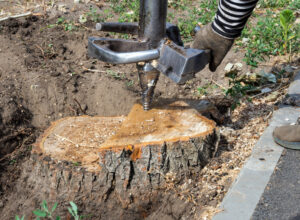
Professional tree services offer various services, including tree removal, stump grinding, and stump removal. They have the equipment and expertise to safely and efficiently remove stumps, even large ones or stumps in difficult locations. Many tree services also offer tree pruning, tree transplanting, and other tree care services.
Stump Removal and Your Home’s Curb Appeal
Removing stumps can significantly improve your home’s curb appeal. Stumps can be an eyesore and can make your yard look unkempt. Plus, they can be a tripping hazard and make mowing your lawn difficult. By removing stumps, you can enhance the appearance of your yard and make it safer and more usable.
The Importance of Grinding Deep
When grinding a stump, it’s important to grind deep enough to prevent the tree from regrowing from the stump. This typically means grinding at least a few inches below the ground level. If the stump isn’t ground deep enough, the tree could sprout new growth, leaving you with the same problem you started with.
Frequently Asked Questions
What Happens to the Wood from the Tree Stump After Grinding?
After stump grinding, the wood chips produced can be used in various ways. They can be used as mulch in your garden, helping to retain soil moisture and suppress weeds. They can also be composted into nutrient-rich soil for your plants. If you have many wood chips, you might consider donating them to a local park or community garden.
What are the Alternatives to Stump Grinding to Remove a Tree Stump?
In addition to stump grinding, other methods of stump removal include manual removal (digging out the stump), chemical removal (applying chemical agent to disintegrate stumps), and burning (setting the stump on fire).
Can I Build or Pave Over the Area Where a Stump Was Ground Out?
Yes, you can build or pave over the area where a stump was ground out. However, it’s important to ensure that the stump has been ground deep enough for construction or paving. If the stump is not ground deep enough, it could interfere with the stability of the structure or pavement.
What Types of Stump Grinders Are There?
Several types of stump grinders are available, each suited to different types of jobs. Handheld stump grinders are portable and easy to maneuver, making them ideal for small stumps or stumps in hard-to-reach areas. Larger, heavy-duty stump grinders are more powerful and can handle larger and multiple stumps more efficiently.
Can I Ask for Stump Removal with Tree Removal to Reduce Costs?
Yes, many tree services offer package deals that include tree and stump removal. This can be a cost-effective option if you have multiple trees to remove or want to ensure that the entire tree, including the stump, is removed in one go.
Whether you grind or remove a tree stump, it’s an important step in maintaining a safe and attractive yard. Always consider the size and location of the stump, the impact on surrounding trees, and the cost and time involved. And remember, when in doubt, it’s always best to consult a professional.

